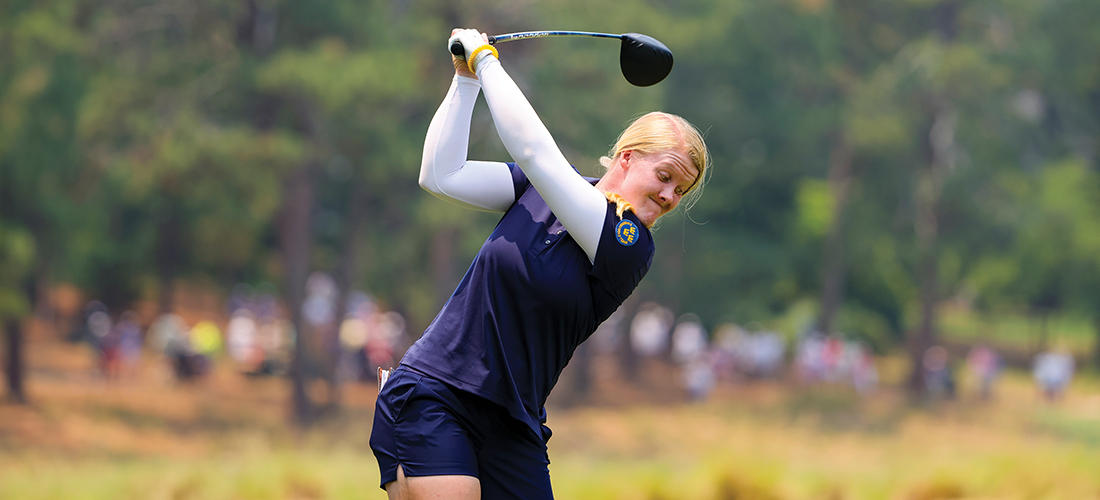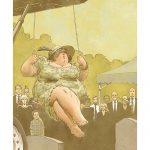
All in Good Time
The pause at the top
By Lee Pace
“Beware the fury of a patient man.” — John Dryden
Over a lifetime I have collected baseball cards, vintage postcards, spy novels, golf headcovers, Matchbox cars and bottles of hot sauce. Now I’m into collecting Instagram posts, most notably those portending to help with the golf swing and within that subculture those addressing the transition at the top of the backswing.
There’s a post with a collage of Fred Couples swings, one per annum over three decades in rapid fire, his buttery move sending balls flying the nation over. Couples has talked over his illustrious career of “gathering” and “buying time” at the top. “One drill I have done is take a 9-iron, hold it at the top for a split second and then go ahead and hit it,” Couples says. “I think slow and lazy swing.”
In another post, Michael Mitnick, an Ohio college student and aspiring club professional, executes this very drill, what he calls “The Pause Drill.” He addresses a ball, takes the club back, holds it at the top about a one-Mississippi breath, then delivers his blow and launches the ball high into the sky. “Having a deliberate pause will help you not rush your swing and develop a fluid tempo,” he offers.
And one I really like is a snippet of Justin Thomas hitting a half-wedge over a bunker and stopping it inches from the cup. “The patience in transition is enviable,” PGA Tour golfer Parker McLachlin says in his Instagram feed, adding a pair of salivating emojis. “There’s not a rush to hit the ball.”
Indeed, in this world rife with kryptonite-laced golf balls and nuclear-tipped driver heads, where college players get home in two with a driver and a 6-iron, where swing speeds are measured on Ferrari dashboards, there remains one corner of the world for calm and quiet.
The top of the backswing.
That’s right. After all, if you’re going one way and then want to go in reverse 180 degrees, you have to stop. It’s science. So what’s your hurry?
The great Bobby Jones once remarked, “No one ever swung a golf club too slowly.” Another talented golfer by the name of Julius Boros, who as a young man married into the Mid Pines Inn and Golf Club ownership family, was nicknamed “Old Man River” for his sweet tempo and even wrote a book titled Swing Easy, Hit Hard.
Renowned instructor Bob Toski tells his students to use the “Coca-Cola Swing,” employing a “pause that refreshes” at the top of the backswing.
“There should be no flash of speed at the top of your swing,” Toski told Golf Digest years ago. “The club should be quiet and not bouncing. This gives you a chance to move the lower body down into the swing. You want to feel that you push the club back and pull it through. Think push, pause, pull.’”
Englishman Justin Rose has fought the tendency to get tense at the top and to rush his transition, so he thinks of “collecting” himself at the top and simply letting his arms “fall from the top, rather than jerking the club down,” he says.
“The transition in the full swing is what separates the good player from the bad player,” says David Orr, the Pine Needles-based instructor who has Rose among his clients.
The famous “secret” espoused by Hall of Famer Ben Hogan has been parsed to a fare-thee-well by golfers, instructors, commentators and biographers. One theory is that the secret was a cupping motion of the left wrist at the top. Another school of thought has that Hogan’s key to the golf kingdom was the way he braced his right knee to initiate the swing, followed by his inward push toward the ball of his knee on the downswing.
A friend and fellow competitor from the mid-20th century pro tour, Tommy Bolt, says Hogan’s secret was actually a trigger he found at the top of his backswing. Bolt went through a period in the late 1950s of hitting everything with a pronounced right-to-left pattern, and Hogan, who battled an incessant hook himself for many years, told him, “Tommy, you’re not going to last long fighting that hook.”
Hogan invited Bolt to visit him at his home in Fort Worth and promised to help Bolt work the hook out of his game. First Hogan weakened Bolt’s grip to take the left side out of play. The second instruction Hogan gave him was to feel both hands secure on the club at the top of the swing.
“It will put your club in great position at the top of the swing,” Hogan said. “It will shorten your swing and allow you to have an accelerated motion coming into the ball.”
After several days of hitting balls and playing the course at Shady Oaks Country Club, Bolt felt he had made progress and prepared to go back out on tour.
“Ben, what do I owe you?” Bolt asked.
“Nothing,” Hogan said. “Well, you owe me one thing. If someone asks you what we worked on, you can tell them I weakened your grip. But as a favor, don’t tell them about keeping both your hands on the club at the top. Tommy, that’s the ‘secret.’ That stays between us.”
Bolt’s face would brighten as he told the story many years later.
“So when they talk about Ben Hogan’s secret,” Bolt said, “I’m the only one who knows what that secret is. At the top of the swing, you make sure you feel both hands secure on that golf club.”
I was reminded of the value of this pause that refreshes during the recent U.S. Women’s Open at Pine Needles. Golfers on the women’s circuit wield silk and syrup as their stocks in trade. Watch Michelle Wie West. She’ll take three beats to the top of her backswing, then one beat to impact. Three-to-one, over and over and over again. Woe to the golfer, particularly the Type-A male, who can’t benefit from a half hour watching these symphonic swings on the practice range.
“Men walk fast, eat fast, drive fast, think fast,” says Ed Ibarguen, a longtime teaching pro at Duke University Golf Club in Durham. “They have very active minds. In the golf swing, that often translates to active hands. They can certainly benefit by watching the elite female player.”
All of these collected perspectives on the transition from backswing to downswing came to mind recently after I’d turned a 1-over through eight holes start into hash with a succession of pull-hooks I instinctively knew had occurred because I didn’t finish my backswing and was rushing to hit the confounded ball.
I took a deep breath hitting three from the fairway on the 15th hole after jacking my tee shot into a lake. Exaggerate your pause at the top on your practice swing. Feel your hands on the club at the top. Push, pause, pull. Collect yourself at the top.
I played the last three holes even par and took my dear sweet time along the way. PS
Lee Pace has written “Golftown Journal” since 2008. Contact him at leepace7@gmail.com and follow him on Instagram at @leepaceunc.





